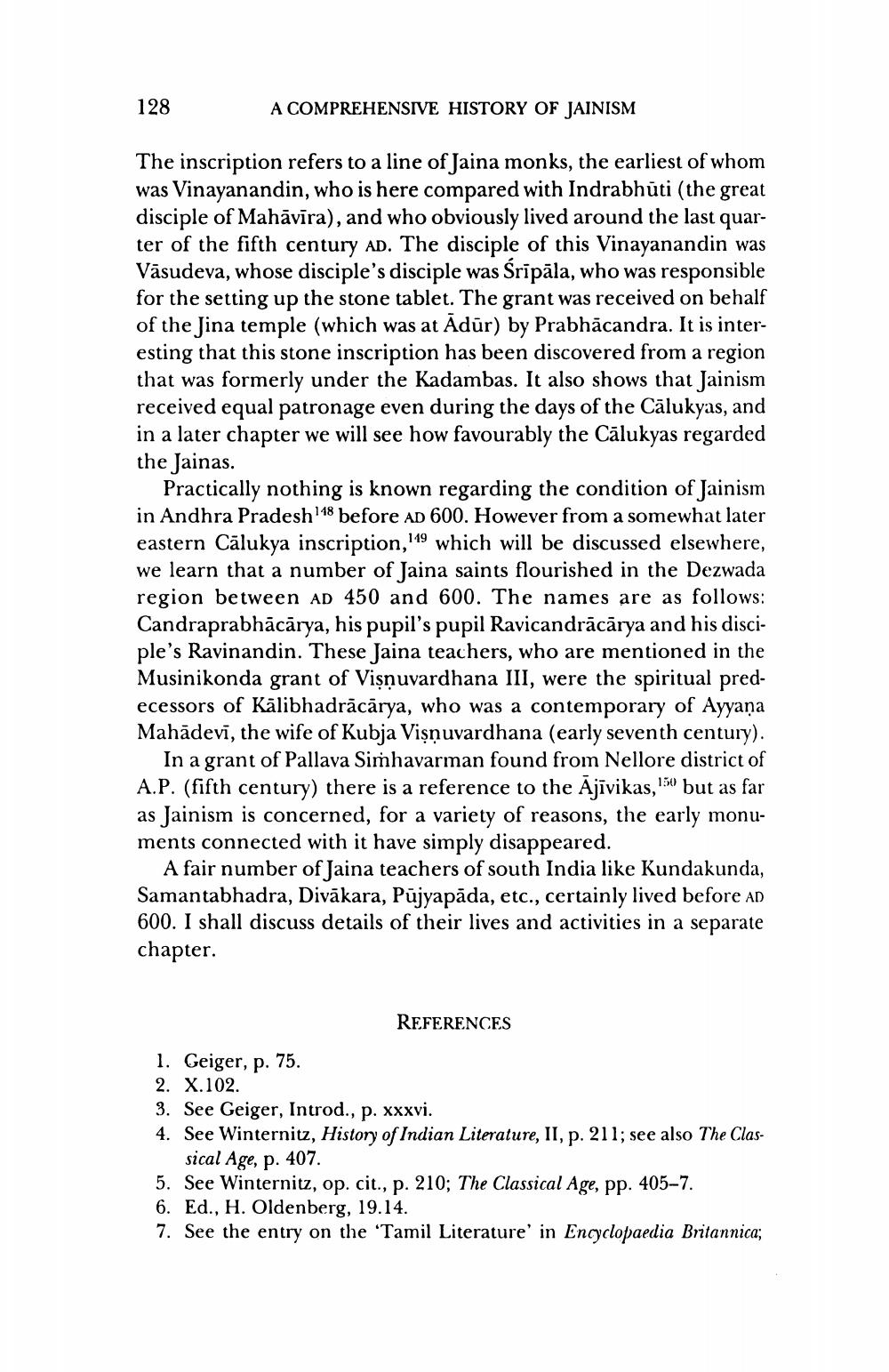________________
128
A COMPREHENSIVE HISTORY OF JAINISM
The inscription refers to a line of Jaina monks, the earliest of whom was Vinayanandin, who is here compared with Indrabhūti (the great disciple of Mahāvīra), and who obviously lived around the last quarter of the fifth century AD. The disciple of this Vinayanandin was Vāsudeva, whose disciple's disciple was Śrīpāla, who was responsible for the setting up the stone tablet. The grant was received on behalf of the Jina temple (which was at Adūr) by Prabhācandra. It is interesting that this stone inscription has been discovered from a region that was formerly under the Kadambas. It also shows that Jainism received equal patronage even during the days of the Cālukyas, and in a later chapter we will see how favourably the Cālukyas regarded the Jainas.
Practically nothing is known regarding the condition of Jainism in Andhra Pradesh 148 before AD 600. However from a somewhat later eastern Cālukya inscription, 149 which will be discussed elsewhere, we learn that a number of Jaina saints flourished in the Dezwada region between AD 450 and 600. The names are as follows: Candraprabhācārya, his pupil's pupil Ravicandrācārya and his disciple's Ravinandin. These Jaina teachers, who are mentioned in the Musinikonda grant of Vişnuvardhana III, were the spiritual predecessors of Kālibhadrācārya, who was a contemporary of Ayyaņa Mahādevī, the wife of Kubja Vişnuvardhana (early seventh century).
In a grant of Pallava Simhavarman found from Nellore district of A.P. (fifth century, there is a reference to the Ajīvikas, 150 but as far as Jainism is concerned, for a variety of reasons, the early monuments connected with it have simply disappeared.
A fair number of Jaina teachers of south India like Kundakunda, Samantabhadra, Divākara, Pujyapāda, etc., certainly lived before AD 600. I shall discuss details of their lives and activities in a separate chapter.
REFERENCES
1. Geiger, p. 75. 2. X.102. 3. See Geiger, Introd., p. xxxvi. 4. See Winternitz, History of Indian Literature, II, p. 211; see also The Clas
sical Age, p. 407. 5. See Winternitz, op. cit., p. 210; The Classical Age, pp. 405-7. 6. Ed., H. Oldenberg, 19.14. 7. See the entry on the 'Tamil Literature in Encyclopaedia Britannica;




